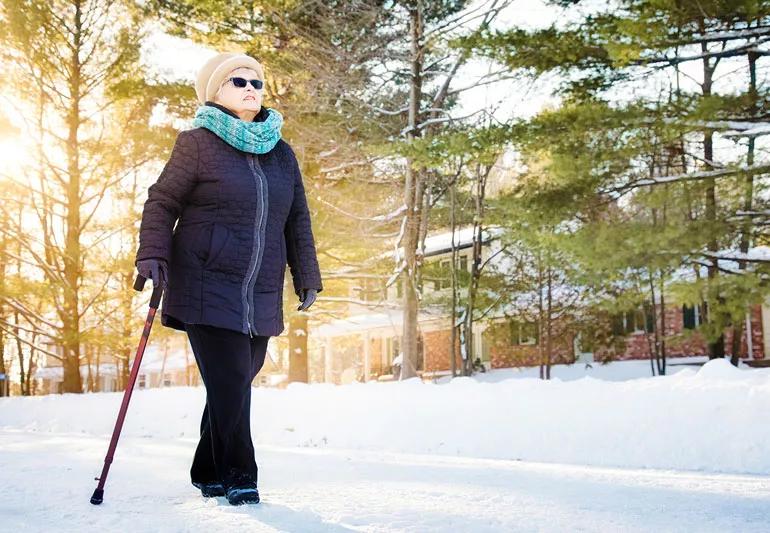Staying active plays a critical role

The word “frail” often is used to describe the appearance of an older adult. The term itself suggests vulnerability, slowness and disability. The medical definition of frailty requires that three of these characteristics be present:
Advertisement
Cleveland Clinic is a non-profit academic medical center. Advertising on our site helps support our mission. We do not endorse non-Cleveland Clinic products or services. Policy
Unfortunately, low physical activity is a common way of life for many Americans. “I can honestly say that physical activity and/or exercise is probably the most difficult prescription for my patients to fill,” says geriatric specialist Ronan Factora, MD.
We asked Dr. Factora how you can avoid getting frail as you age.
Dr. Factora says, with older adults, much of their time is spent in sedentary pursuits.
“If they’re not watching TV, then they’re in front of some type of a screen (such as a computer or handheld device), reading, doing puzzles — anything but moving around,” he says. As a result, the muscles in these older adults lose their functional capacity and tone, and may eventually become infiltrated with fat.
Aside from the obvious change in muscle tissue, an older adult’s ability to function is also affected. “As a result, this also leads to reported physical exhaustion, muscle weakness, and potentially a decline in walking speed,” says Dr. Factora.
He says lack of physical activity alone also could lead to decline in walking speed due to a loss of muscle tone, muscle function, and cardiovascular endurance.
Advertisement
“Low physical activity is not only a consequence of weight loss and muscle mass loss — it can become a cause,” says Dr. Factora.
This leads to a downward spiral in consuming adequate calories. Dr. Factora says when you’re not physically active, your appetite dwindles, and this can lead to inadequate protein and calorie intake which are what your body uses to maintain muscle mass and support further physical activity.
“Higher physical activities compel a person to actually eat more and replenish their body with the calories it needs.”
It’s clear how all of these frailty characteristics are interrelated. “Developing frailty does not happen overnight,” says Dr. Factora. “It takes years for frailty syndrome to develop as a consequence of low physical activity and weight loss. When it does develop, reversal is extremely difficult.”
Generally speaking, people want to maintain independence and a good quality of life while aging, and they want to avoid disability as much as possible. Many people mistakenly assume frailty is part of normal aging. It’s true that many aging persons do become frail, but there are a number of interventions that can prevent or even reverse frailty.
Though it may seem simple, all individuals should do the following to help reduce the risk of developing disability and frailty:
“Making a physical activity routine sounds easy and straightforward, but from my clinical perspective, regular exercise can be difficult for older patients to sustain,” says Dr. Factora.
Despite the challenge, this simple intervention can be the foundation for avoiding frailty and disability and maintaining independence into later life.
Advertisement
Learn more about our editorial process.
Advertisement

Activities like swimming, cycling and rowing can get your heart pumping without stressing your joints

Low-intensity interval training, or LIIT, offers numerous benefits and less wear and tear

Weightlifting and other types of resistance training bring many health benefits

Getting stronger, feeling better and staying active isn’t just possible — it’s doable

Cramps can creep up if your shoes are too tight, you’re dehydrated or you have poor circulation

The order of your workout matters when it comes to reaching fitness goals

A consistent exercise routine can bring you positive results from head to toe

This ancient form of exercise can offer a physical and mental boost

If you’re feeling short of breath, sleep can be tough — propping yourself up or sleeping on your side may help

If you fear the unknown or find yourself needing reassurance often, you may identify with this attachment style

If you’re looking to boost your gut health, it’s better to get fiber from whole foods